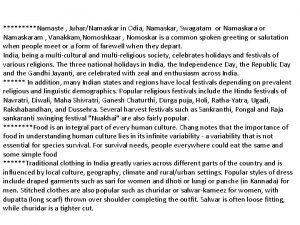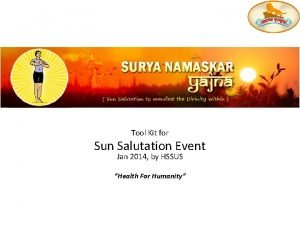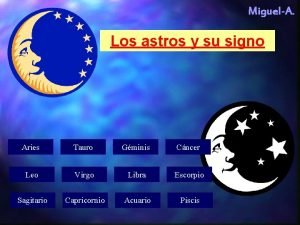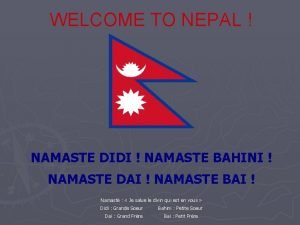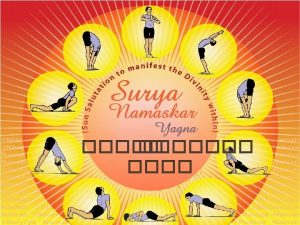Namaste JuharNamaskar in Odia Namaskar Swagatam or Namaskaram



- Slides: 3

*****Namaste , Juhar/Namaskar in Odia, Namaskar, Swagatam or Namaskaram , Vanakkam, Nomoshkaar , Nomoskar is a common spoken greeting or salutation when people meet or a form of farewell when they depart. India, being a multi-cultural and multi-religious society, celebrates holidays and festivals of various religions. The three national holidays in India, the Independence Day, the Republic Day and the Gandhi Jayanti, are celebrated with zeal and enthusiasm across India. ****** In addition, many Indian states and regions have local festivals depending on prevalent religious and linguistic demographics. Popular religious festivals include the Hindu festivals of Navratri, Diwali, Maha Shivratri, Ganesh Chaturthi, Durga puja, Holi, Ratha-Yatra, Ugadi, Rakshabandhan, and Dussehra. Several harvest festivals such as Sankranthi, Pongal and Raja sankaranti swinging festival "Nuakhai" are also fairly popular. ****Food is an integral part of every human culture. Chang notes that the importance of food in understanding human culture lies in its infinite variability - a variability that is not essential for species survival. For survival needs, people everywhere could eat the same and some simple food ******Traditional clothing in India greatly varies across different parts of the country and is influenced by local culture, geography, climate and rural/urban settings. Popular styles of dress include draped garments such as sari for women and dhoti or lungi or panche (in Kannada) for men. Stitched clothes are also popular such as churidar or salwar-kameez for women, with dupatta (long scarf) thrown over shoulder completing the outfit. Salwar is often loose fitting, while churidar is a tighter cut.

****India has had a long romance with the art of dance. Indian dance includes eight classical dance forms, many in narrative forms with mythological elements. The eight classical forms accorded classical dance status by India's National Academy of Music, Dance, and Drama are: bharatanatyam of the state of Tamil Nadu, kathak of Uttar Pradesh, kathakali and mohiniattam of Kerala, kuchipudi of Andhra Pradesh, yakshagana of Karnataka, manipuri of Manipur, odissi (orissi) of the state of Odisha and the sattriya of Assam. ******Music is an integral part of India's culture. Natyasastra, a 2000 -year-old Sanskrit text, describes five systems of taxonomy to classify musical instruments ******Cave paintings from Ajanta, Bagh, Ellora and Sittanavasal and temple paintings testify to a love of naturalism. Most early and medieval art in India is Hindu, Buddhist or Jain *****Indian architecture encompasses a multitude of expressions over space and time, constantly absorbing new ideas. The result is an evolving range of architectural production that nonetheless retains a certain amount of continuity across history. Some of its earliest production are found in the Indus Valley Civilisation (2600– 1900 BC) which is characterised by well planned cities and houses. Religion and kingship do not seem to have played an important role in the planning and layout of these towns. *******Field hockey is the official national sport in India At a time when it was especially popular, the India national field hockey team won the 1975 Men's Hockey World Cup, and 8 gold, 1 silver, and 2 bronze medals at the Olympic Games. However, field hockey in India no longer has the following that it once did. *******One of the best known forms of ancient Indian martial arts is the Kalarippayattu from Kerala *******Indian television started off in 1959 in New Delhi with tests for educational telecasts

country. The Indian culture, often labeled as an amalgamation of several cultures, spans across the Indian subcontinent and has been influenced by a history that is several millennia old. . Many elements of India's diverse cultures, such as Indian religions, yoga, and Indian cuisine, have had a profound impact across the world. ****IT HAS MANY RELEGION. . ***** traditional Indian culture is defined by a relatively strict social hierarchy. He also mentions that from an early age, children are reminded of their roles and places in society. This is reinforced, Makar notes, by the way many believe gods and spirits have an integral and functional role in determining their life. Several differences such as religion divide the culture. However, a far more powerful division is the traditional Hindu bifurcation into non-polluting and polluting occupations. Strict social taboos have governed these groups for thousands of years, claims Makar. In recent years, particularly in cities, some of these lines have blurred and sometimes even disappeared. He writes important family relations extend as far as gotra, the mainly patrilinear lineage or clan assigned to a Hindu at birth. In rural areas & sometimes in urban areas as well, it is common that three or four generations of the family live under the same roof. The patriarch often resolves family issue ****For centuries, arranged marriages have been the tradition in Indian society. Even today, the majority of Indians have their marriages planned by their parents and other respected family-members. In the past, the age of marriage was young. The average of marriage for women in India has increased to 21 years, according to 2011 Census of India. In 2009, about 7% of women got married before the age of 18 *****Weddings are festive occasions in India with extensive decorations, colors, music, dance, costumes and rituals that depend on the religion of the bride and the groom, as well as their preferences. The nation celebrates about 10 million weddings per year, of which over 80% are Hindu weddings.
